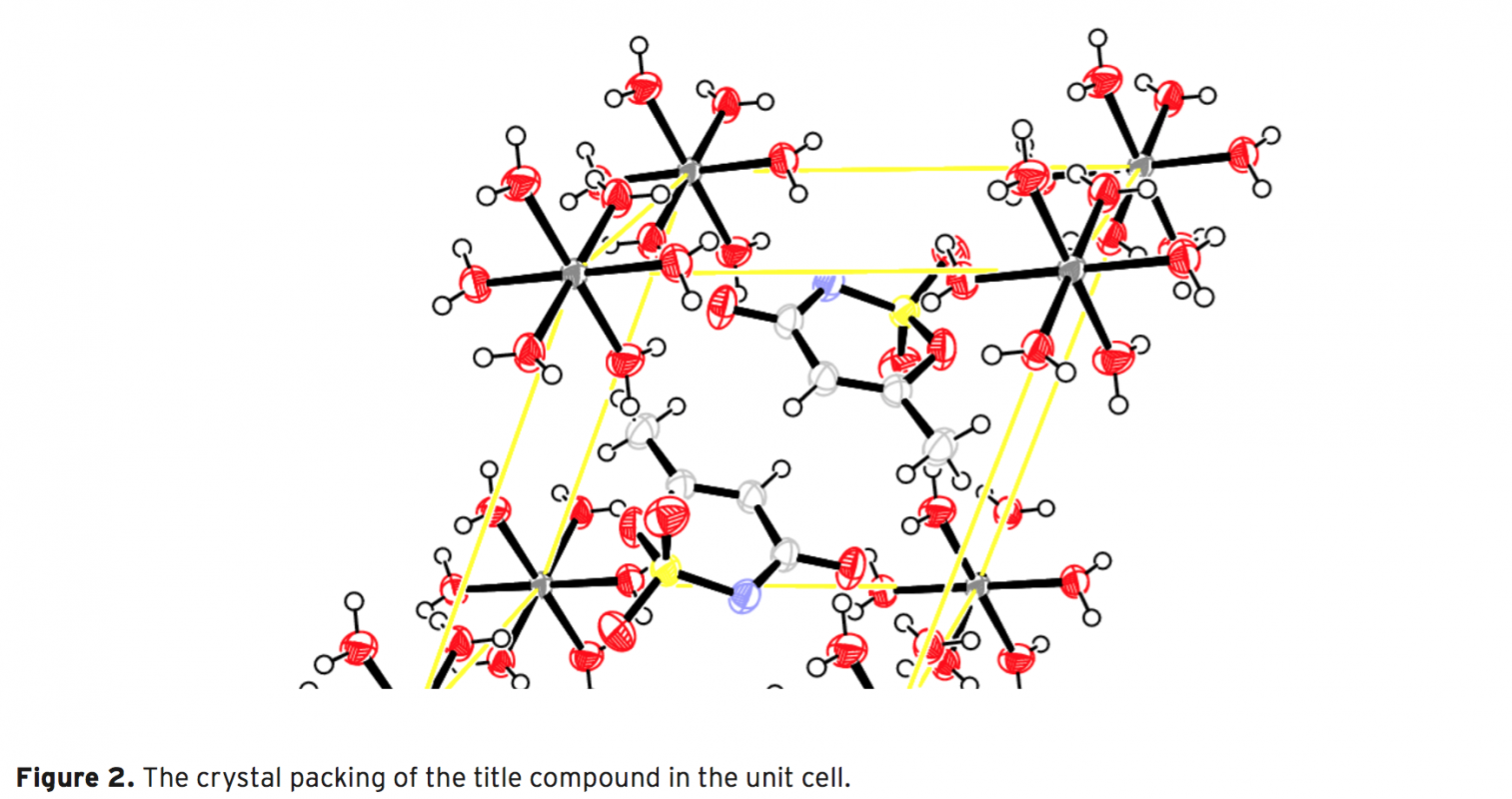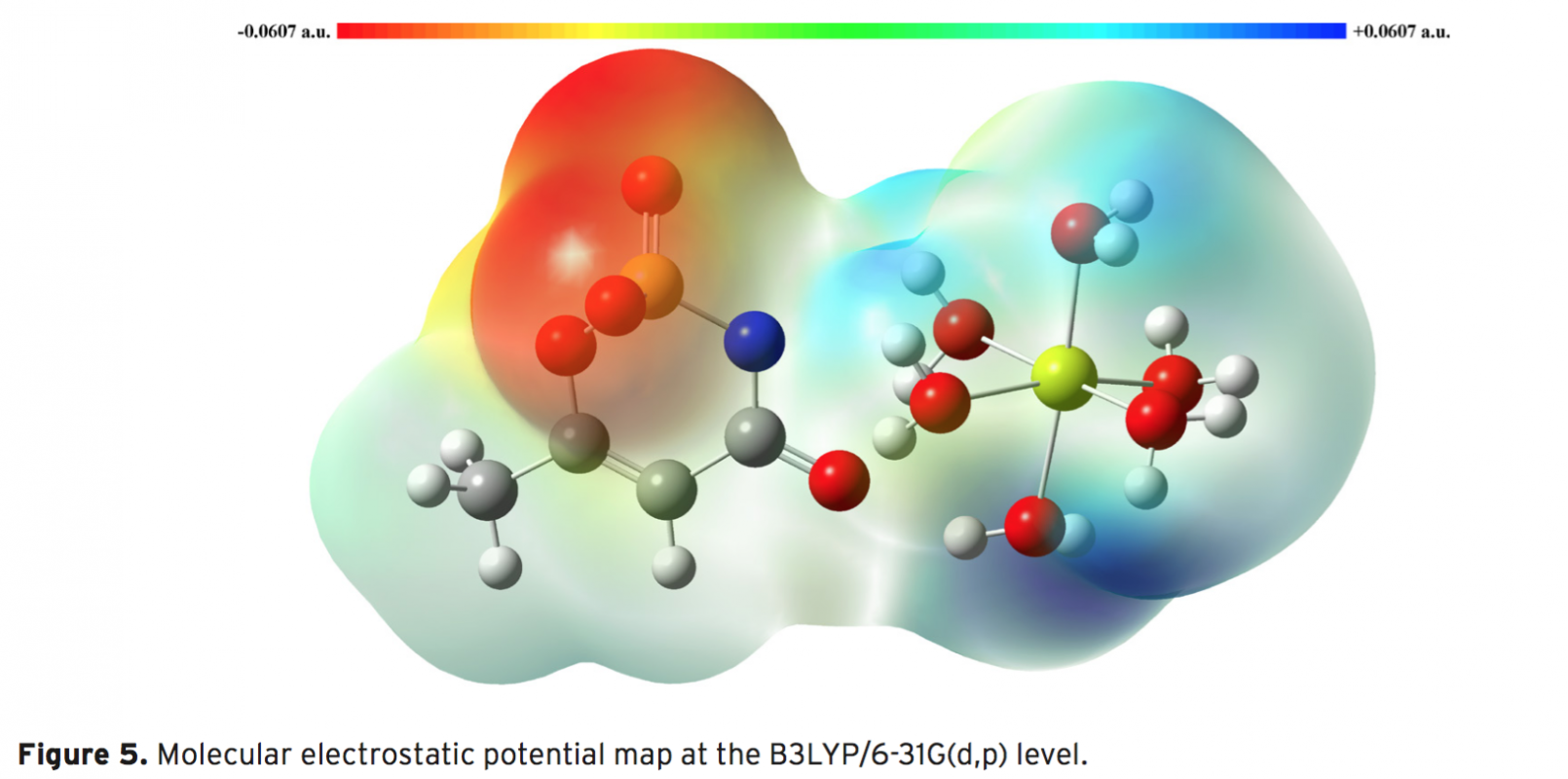The crystal structure of the complex, [Mg(H2O)6](C4H4NO4S)2, was determined at 296 K. The unit cell parame- ters of the crystal structure are a=6.9404 Å, b=8.5775 Å, c=8.7200 Å, α=68.564°, β=78.640°, γ=81.260° and Z=1. The complex crystallizes in the centrosymmetric triclinic space group P-1. The Mg(II) ion is coordinated by six O atoms from six aqua ligands and in the crystal structure, the anions and cations are linked with three dimensions via O—H···O and O—H···N interactions. In addition to the structure which was obtained by X-ray diffraction technique, the theoretical structure was calculated by using density functional theory (B3LYP) with the 6-31G basis sets. The molecular electrostatic potential, frontier molecular orbitals and theoretical IR studies were calculated by using DFT method. Besides, the experimental IR spectrum and thermal analysis were investigated for the complex.
Kompleksin kristal yapısı [Mg(H2O)6](C4H4NO4S)2, 296 K’de tayin edildi. Moleküler Kristal yapının birim hücre parametreleri a=6.9404 Å, b=8.5775 Å, c=8.7200 Å, α=68.564°, β=78.640°, γ=81.260° ve Z=1 olarak saptanmıştır. Kompleks merkezi simetrik triklinik yapıda kristallenmiş olup uzay grubu P-1’dir. Her bir Mg(II) iyonu altı mol su ligandının O atomları tarafından koordine edilmiştir. Kristal yapıda anyonlar ve katyonlar O—H···O ve O—H···N etkileşimleriyle üç boyutlu yapıyı oluştururlar. İlave olarak yoğunluk fonksiyonel teori (DFT) (B3LYP) yönteminin 6-31G temel setleri kullanılarak elde edilen hesaplanmış sonuçlarla deneysel X-ışınları kırınım sonuçları kıyaslanarak moleküler yapı oluşturulmuştur. Moleküler elektrostatik potansiyel, frontier moleküler orbitaller ve IR spektrumu DFT yöntemi kullanılarak hesaplanmıştır. Ayrıca, deneysel IR spektroskopi ve termal analiz yöntemleri ile yapı incelenmiştir.




Download Article in PDF (951.5 kB)